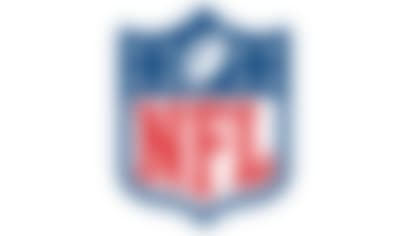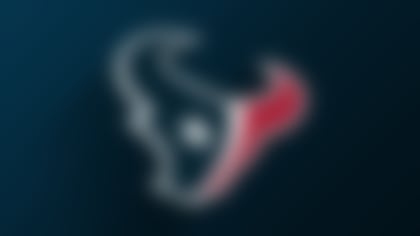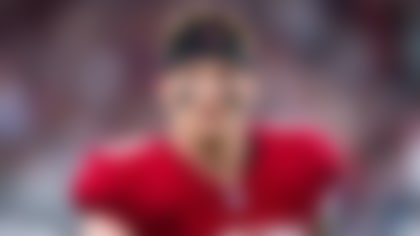While NFL owners and players try to hammer out a new collective bargaining agreement this week, football people with all 32 teams are working just as hard on draft preparation. However, it's a different animal this year.
Normally, teams would have already begun addressing their needs in free agency, but all front-office executives and coaches can do at this point is continue to dig deeper into the draft class and prepare for free agency in case something gets done with a new CBA.
Most NFL decision-makers are starting to get a good feel for the quality of depth at every position in the draft, and with some analysis by their pro personnel departments, they also should be clearing up the probable needs for their teams and where they might go in the draft to fill those holes. Quarterback is the first position to observe from the perspective of "reach" and "run".
Will teams have to reach for a quarterback to insure they get one? Should teams reach for the few prospects that grade similarly but aren't quite there yet? Will the first reach set off a run on the position?
Teams that need a quarterback are going to have to consider reaching for one, or there might not be a lot to pick from by the time they draft again. Carolina, for example, picks first overall but doesn't select again until the top of the third round. Can Cincinnati, which owns the fourth overall pick, really call Carson Palmer's bluff? The Redskins might not love a guy like Jake Locker enough to take him with the 10th pick, but who will be there when they pick again in the second round (No. 41)? What choice does Minnesota have at No. 12 if Joe Webb is the only QB under contract and a realistic trade isn't possible?
As predictable as the fact that the draft is coming in April, quarterbacks are going to start to drive toward the top of the draft process. In each of the past 10 years, there has been at least one quarterback taken among the top three picks. Among them are some very interesting -- and in some cases disastrous -- stories that have been told.
Notice there's only one Super Bowl title from the entire group (Eli Manning), yet with weeks to go before the draft, the excitement is building that 2011 will have one more name to add to the list. We are hearing about how Cam Newton and Blaine Gabbert are pushing their way into the top five picks. With at least seven of the top 10 teams in the draft in need of a quarterback, it's easy to see how "reach" and "run" come into play.
Of those on the list from the last 10 years, the ones that have had some success have one thing in common: Throwing experience. Newton threw 292 Division I passes and was sacked 23 times, or once every 13 attempts. Gabbert, on the other hand, had 933 pass attempts and 42 sacks (once every 22 attempts). Gabbert has looked at college coverage in Division I games 660 more times than Newton, so the value of experience must be considered.
Some are quick to point out that Mark Sanchez has done well for a guy with one year's experience as a college starter and that Newton will overcome it as well. He just might, but he also bounced around from the University of Florida to junior college to Auburn, whereas Sanchez sat in one place in a pro-style offense and was involved in close to 200 more pass plays than Newton. Michael Vick (357 college pass plays) came to the NFL with similar passing experience to Newton, so it can be done. But college throwing experience has been a decent barometer of NFL success, especially in the last three years. Matthew Stafford (1,031) and Matt Ryan (1,397) surpassed 1,000 attempts, and Sam Bradford (918 attempts) wasn't far behind.
Some project Newton to go to Buffalo at No. 3, which would be ideal for him. Bills coach Chan Gailey is creative running the offense, and there would be no rush to put Newton on the field with Ryan Fitzpatrick in place. One general manager told me he thought Newton would be gone by Buffalo's pick, a scenario that, if played out, would put Gabbert and Locker on the launch pad. After a possible reach for Newton, a run could be on. In the past, it's been pretty good luck to be the second or even the third QB taken.
Gabbert to the Bills?
In his latest mock draft, Pat Kirwan has the Bills selecting Blaine Gabbert third overall, one slot ahead of the Bengals also going QB. **More ...**
Drew Brees (second QB taken in 2001, behind Vick), Ben Roethlisberger (third in 2004, behind Eli Manning and Philip Rivers), and Aaron Rodgers (second in 2005, behind Alex Smith) followed the top quarterback(s) in their drafts and already have at least one Super Bowl ring. Other recent quarterbacks taken behind the top players at the position include Jay Cutler, Joe Flacco, Mark Sanchez and Josh Freeman -- a more formidable list, perhaps, than the guys picked ahead of them.
One personnel director not in need of a quarterback told me he thinks this draft could produce as many quarterbacks in the first 11 picks as 2004 did, but that this group will never measure up to Manning, Rivers and Roethlisberger. In 2004, Atlanta took Matt Schaub in the third round with the 90th overall pick. The Falcons eventually traded him to Houston for essentially two second-round picks, and all he's done in pro football is throw 77 touchdowns in 54 starts since.
One thing's for sure: With 10 teams in need of a quarterback, there will be a second run on them in the draft. Is there a Schaub-like candidate that will set it off? It could be Ryan Mallett, the Arkansas quarterback with a cannon arm and some off-field issues. In the second round, his 69 touchdown passes are going to look real good. It could also be Christian Ponder, a safer pick with some medical issues but a ton of big-game experience at Florida State.
As soon as one player starts the run, look for Nevada's Colin Kaepernick and a guy like TCU's Andy Dalton to follow. One quarterback coach I respect told me he likes a few of the guys in the second wave. A college scout told me if he had a choice, he'd stay away from the whole class until the early third round, but recognizes the reach and acknowledges the run will start way too early with probably three phases before the end of the fourth round.



